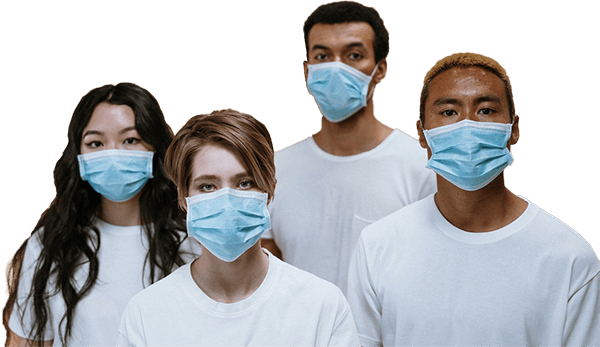Using AI to generate anime characters fascinates me, especially given how the technology has evolved in recent years. I remember when tools like these first appeared around 2018; the quality was rudimentary at best. Fast-forward five years, and now we have sophisticated algorithms producing near-professional level anime art in seconds. I think it’s important to note that the key to effectively using these kinds of AI generators lies in understanding their parameters and limitations.
Firstly, one must realize that the quality of output significantly depends on the data set the AI has been trained on. Most high-quality anime AI generators operate on large data sets—think millions of images. It's like teaching a child to draw by showing them an expansive gallery of artwork instead of just a few pieces. In 2020, OpenAI’s GPT-3, which uses 175 billion parameters, demonstrated how larger data sets contribute to better and more nuanced results. These same principles apply when training models for visual art generation.
Also, it’s crucial to understand the technical terms involved in using these AI tools. For example, terms like "latent space" and "GAN" (Generative Adversarial Networks) are often thrown around. GANs—which consist of two neural networks, a generator, and a discriminator—work in tandem to improve the quality of the generated images. The generator creates images, while the discriminator evaluates them for authenticity, pushing the generator to produce better images each cycle. Understanding these terms helps in tweaking the generator’s settings for better results.
I really got into AI generators back in 2021. To start with, I had to set a budget. High-quality generators often come at a price. I found that monthly subscriptions range from $10 to $50, depending on the features offered. Yes, there are free versions, but they often come with limitations, like watermarked images or restricted usage rights. For instance, I use an AI tool that costs me about $30 a month but offers unlimited high-res renders without watermarks, which is crucial for my small anime-themed art shop.
Customizability is another significant factor. Generators that allow for fine-tuning parameters yield much better results. This means you can adjust specifics like eye shape, hair color, and even the emotional expression of the character. An example of this is the AILab generator, where I can modify more than 20 different attributes in a single click. This level of control helps in achieving exactly the kind of character I have in mind, down to the smallest detail.
Speaking of detail, the speed of rendering is another critical aspect. I timed a few generators and found significant differences. The app I use can render an image in about 15 seconds, while some older or free versions took up to a minute or more. This quick turnaround allows for rapid iteration, which is invaluable when you’re experimenting with various design choices. Speed becomes even more crucial during tight deadlines or creative spurts when you want to maintain the momentum.
I came across an article by Soul Deep AI that detailed various available tools and their efficiencies. Among those reviewed, Soul Deep highlighted five generators, and their assessments mirrored my findings. For example, they underlined that higher-cost tools generally provide a richer feature set and more customization options, making the investment worthwhile for serious users or professionals. This aligns perfectly with my own experiences and investments in the field.
By now, I’m so accustomed to these generators that I’ve integrated them entirely into my creative workflow. It's not just about generating images; it's about pushing the boundaries. I follow a standard cycle where I draft an initial concept, generate a base image using the AI, and then iterate over it manually to add personal touches. This hybrid approach, blending machine efficiency with human creativity, seems to hit the sweet spot. There’s something magical about watching an idea go from a rough concept to a fully-fledged anime character in under an hour.
One question I often hear is, "Are there legal concerns when using AI-generated art?" It’s a valid concern. The short answer is: it depends on the tool and the usage rights attached to it. Some companies provide full commercial usage rights, while others restrict the artwork to personal use only. Checking the terms and conditions before investing in any generator is essential. For instance, Adobe’s proprietary AI Art Generator explicitly states that users must buy a separate license for commercial use, adding another layer of cost.
Another factor to consider is the style fidelity. Different AI generators excel at reproducing different anime styles. Some are better at mimicking the modern, clean lines seen in 2020s anime, while others excel at replicating the more classic, hand-drawn look of the 1980s. Knowing what style you need and choosing the right generator for the job can vastly improve your results. I myself enjoy nostalgic themes, so I often gravitate toward generators that offer more retro-styled outputs.
Lastly, the community plays a significant role in leveraging these tools effectively. Online forums and user groups are invaluable for learning tips and tricks. For instance, I discovered that adjusting the "random seed" settings can yield entirely different outputs from the same initial prompt, thanks to a discussion on a Reddit thread. Communities also serve as a great source for troubleshooting, sharing resources, or even finding collaborators for projects. The exchange of ideas and experiences often leads to better results and new techniques.
In conclusion, while a good anime AI generator opens up a world of possibilities, making the best of it requires some homework. Understanding the technical terms, setting a budget, considering customization options, and being aware of legal issues are all parts of the puzzle. It’s a journey, but an exciting one. And with the pace at which technology evolves, I can’t wait to see what these tools can do in the coming years. If you’re as intrigued as I am, Anime AI generators are a fantastic place to start.
